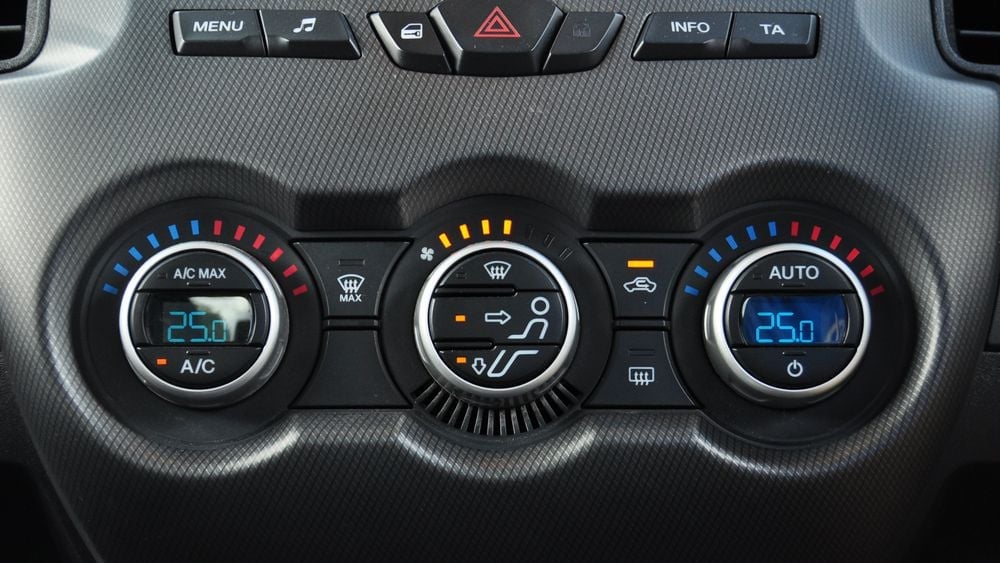
Understanding how to turn your car heater on is essential for a comfortable drive.
In three steps, you can turn on the heat in your car — switch on the car's engine, set the right heat level, and change the fan's speed.
Once you've set the temperature, automatic vehicle heaters will blow cold or warm air interchangeably to maintain your desired climate.
The following sections review the step-by-step instructions, discuss the various controls, and troubleshoot common car heater problems.
 A car's climate controls.
A car's climate controls.
How Do You Turn on a Car Heater?
In a modern car, turning your car heater on is as simple as starting the engine, setting the thermostat, and switching the fan on.
To turn on the heater in an automatic system, follow the steps below:
- First, press the auto button on the right side of the control panel. It initiates the automatic climate control function.
- Next, set the temperature you want using the heating controls. If desired, select a different temperature for the passenger and driver sides.
- To set up dual climate control, simply press the button labeled "Dual."
- Your car heater will automatically switch between cold and hot air to maintain your preferred temperature.
Do You Turn on the Air Conditioning System for Heat in Your Car?
The AC is for cold air and to help demist your windshield.
For complete heating, you should turn on the fan and set the temperature control dials to full.
If you have a digital display for your heater in the car, press the increase button until it reads "28" or "high."
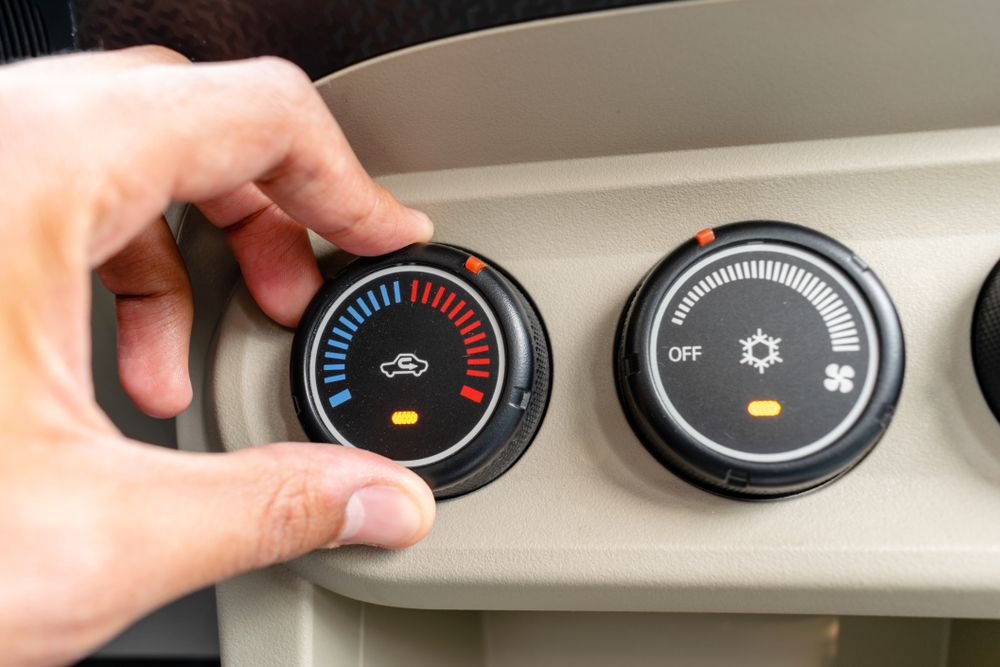 Turning up a car's heater.
Turning up a car's heater.
How Do You Turn on the Heat in Your Car Manually?
If you have an older vehicle or don't want to use the automatic heating system, follow the steps below to turn your heater in the car on manually:
- Start your engine and let it idle. Don't expect heated air until the engine warms properly. Cars take around five minutes to heat, depending on engine size and fuel type.
- Adjust the temperature control button. You'll either have a toggle wheel or dial (turning it clockwise increases the heating) or a digital display. Some luxury vehicles have dual climate controls — one for the passenger and the other for the driver.
- Turn on the car heater by switching on the fan.
- Adjust the heater fan to your desired speed. Keep in mind that changing the fan speed doesn't alter the temperature; it just boosts the distribution of your pre-selected temperature.
What Do the Different Heater Controls Do?
Your car's heating system can seem somewhat complicated when looking at all the different dials and buttons.
Thankfully once you get the hang of it, it will all be simple.
Understanding each one helps manage the temperature inside your car for a perfectly warm (or cold) drive.
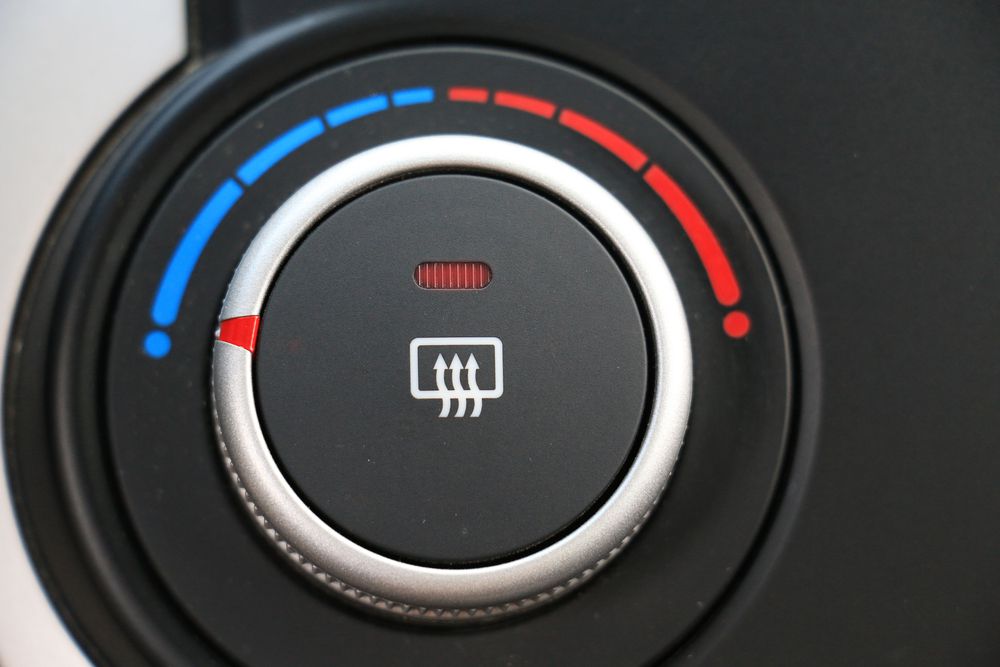 Vehicle's temperature controls.
Vehicle's temperature controls.
Temperature Controls
Naturally, the temperature button is one of the most critical parts.
Older vehicles have colored toggles, while modern cars have digital displays.
While many have separate driver and passenger controls for the heater in the car, some go a step further and have a rear passenger set.
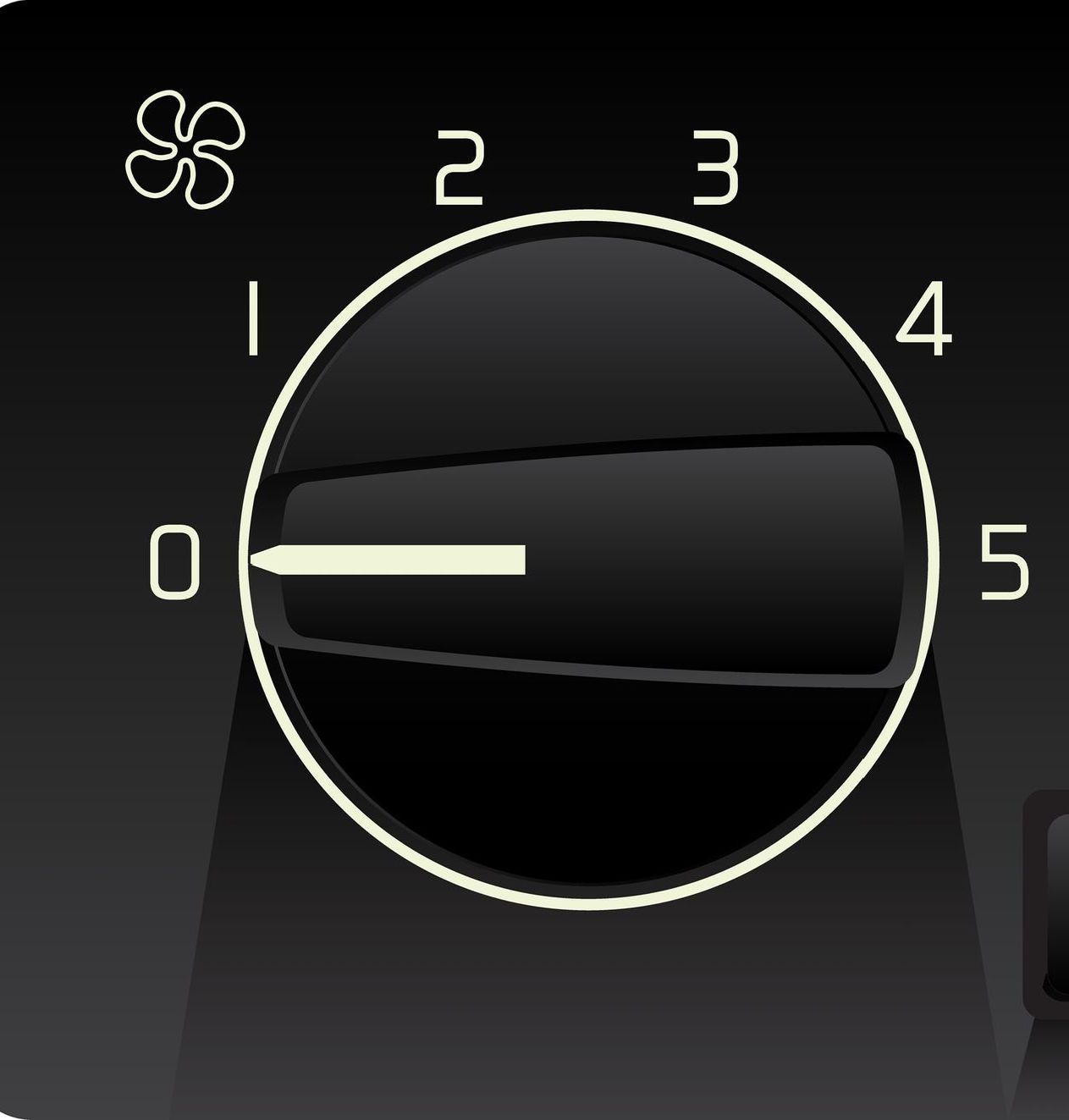 Fan speed controls.
Fan speed controls.
Fan Speed Control
The fan speed control does exactly what its name suggests: to control the climate control system's fan speed.
Consider the blower fan button the "on" switch for your entire heating system.
As you know, it has various speeds and doesn't change the temperature; instead, it moves the air quicker around your vehicle.
Your car might have a digital display or dial like the heater controls.
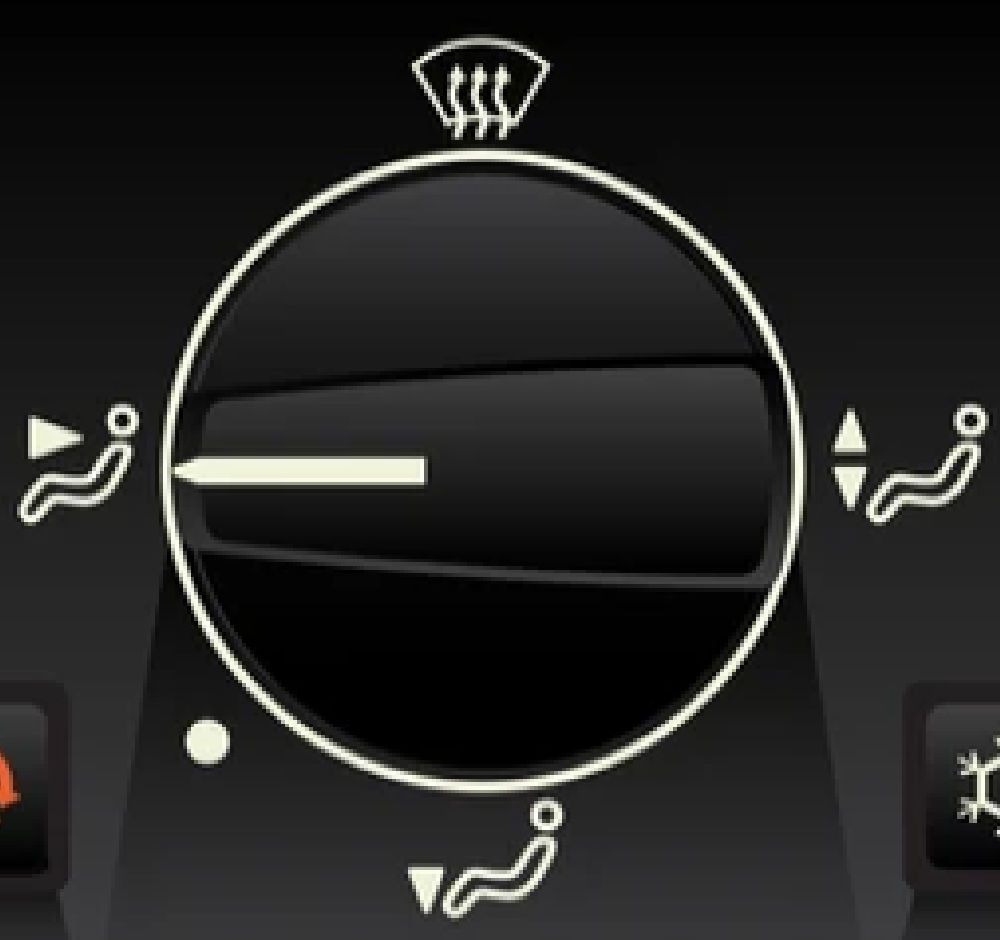 Air direction controls.
Air direction controls.
Air Direction
You can direct the air inside your vehicle using the air distribution settings.
The most commonly used directions are as follows:
- Side windows of the car
- Windshield
- Feet of passengers
- Face of passengers
- Feet and face
This button is usually easy to spot — it's an image of a seated person with arrows pointing at different areas.
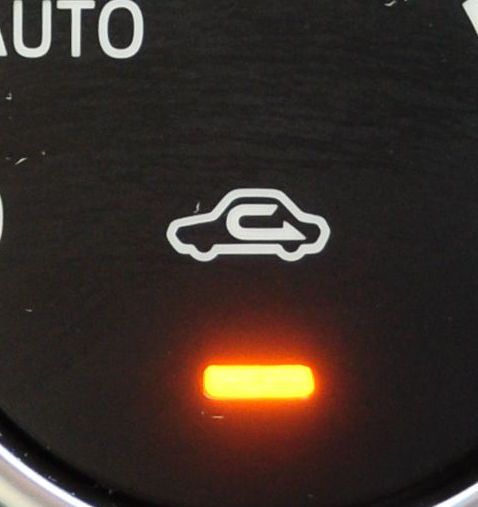 Air recirculation button
Air recirculation button
Recirculation Button
Car heaters tend to use outside air to heat themselves.
The outside vent draws air into the system; it runs through a filter, then out the heat exchanger before distributing through your vehicle's interior vents.
The recirculation control stops outside air from reaching the cabin.
Cars take a while to heat, so recirculating the partially warm air is often the quickest way to help the cabin reach your desired warmth.
Plus, using the recirculation function is useful for short periods when the air quality is poor.
Be mindful that you don't leave it on for prolonged durations as it can mist the windows and decrease cabin air quality.
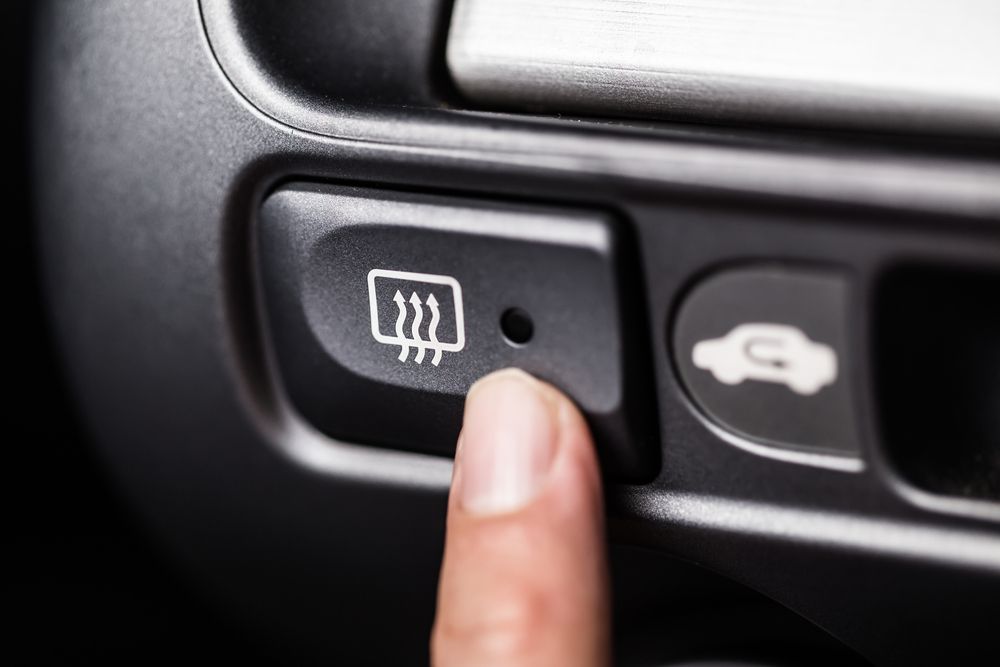 Defrost button
Defrost button
Windshield and Rear Windshield Defrost
Every modern climate control system has a defrost button.
Its function is to defrost your windshield and side windows rapidly.
The pre-programmed setting uses your car's heater to defrost the cabin.
What Should You Do If Your Car's Heater Doesn't Turn On?
If your car is blowing cold air or the heater won't turn on, you're in for an uncomfortable journey.
Generally, you should take your car straight to the mechanic upon noticing the car heater issue.
That said, you can try to diagnose the cause yourself by considering the four common climate system complications below:
#1 Thermostat Issues
The thermostat warms and cools your vehicle, so if your car heater is having problems, check this first.
Excessive wear can easily overreact to the temperature inside, causing overheating or cooling.
Thankfully, you can easily check the thermostat without removing it from the system.
#2 Electrical Problems
Sometimes, car heating systems fail due to electrical faults.
Loose wires, blower motor issues, and fuse box problems could be just a few reasons for your failing car heater.
Contact a mechanic if you can't hear the blower motor or air coming from the vents.
#3 Dirt and Blockages
Like other parts of your vehicle, the air conditioning system can get dirty, especially in regular use.
The coolant system regulates airflow, so blockages cause car heaters to fail.
Failing to fix the problem can cause serious (expensive) issues.
So, ask a mechanic to check the problem and fix your car heater.
#4 Clogged or Stuck Heater Controls
Finally, broken or stuck temperature control buttons can cause car heater problems.
Usually, giving them a quick clean can remedy the issue and restore your manual climate control.
Other times, they might have improper connections, which require a trusted mechanic to fix.
Conclusion
Starting your car's heater involves igniting the engine, setting your desired warmth with the heat controls, and ensuring a good air distribution rate with the fan buttons.
And if you're lucky enough to have an automatic system, your car will easily maintain your preferred climate.